This is our review of the best Wi-Fi extender/repeater for Comcast Xfinity in 2024.

We have bought a bunch of Wi-Fi extenders and repeaters to find out which one is the best.
And after much testing, we have concluded that the best Wi-Fi extender for Xfinity is the TP-Link RE650. Because it’s fast, easy to set up, and affordable.
Editor’s Choice – TP-Link RE650
Best Overall
- Coverage: ≈ 70 feet
- Max speed (Wi-Fi): 332.58 Mbps
- Separate networks: Yes (not with TP-Link routers)
- Recommended for: Extreme Pro or below (900 Mbps)
- Wireless standard: Wi-Fi 5 AC2600
- Warranty: 3 years
But, what extender or repeater is best for you depends. Because people have different internet plans, homes, and routers.
Therefore, we have reviewed the top 7 best repeaters for Comcast Xfinity, so you can pick the best one for YOUR circumstances.
Keep reading to learn them.
- Best Overall: TP-Link RE650
- Best Performer: Netgear EAX80
- Best Wi-Fi 6: TP-Link RE605X
- Runner Up: Netgear EX7300
- Best Value: Linksys RE7000
- Budget-Friendly: TP-Link RE315
- Most Budget-Friendly: Netgear EX3700
Top 7 Wi-Fi Extenders For Comcast Xfinity
| IMAGE | PRODUCT | |
|---|---|---|
| Best Overall 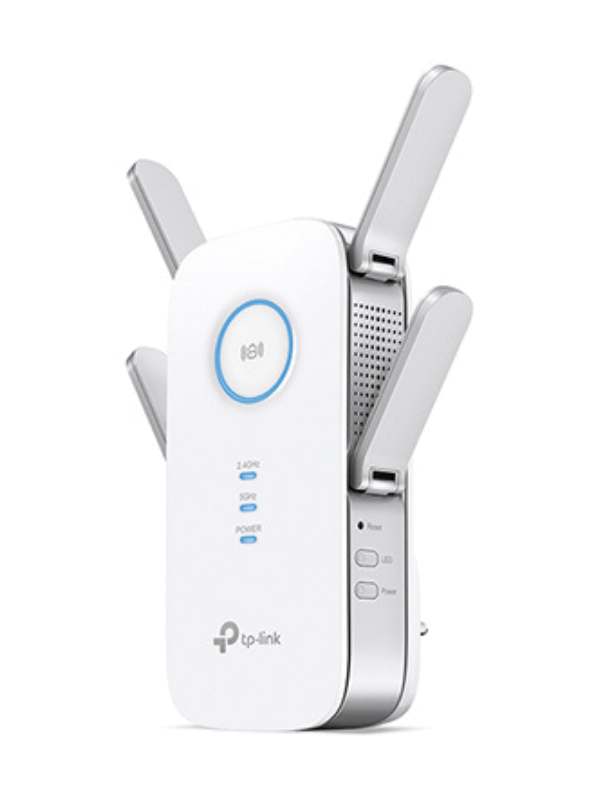 | TP-Link RE650
| VIEW LATEST PRICE → |
| Best Performer 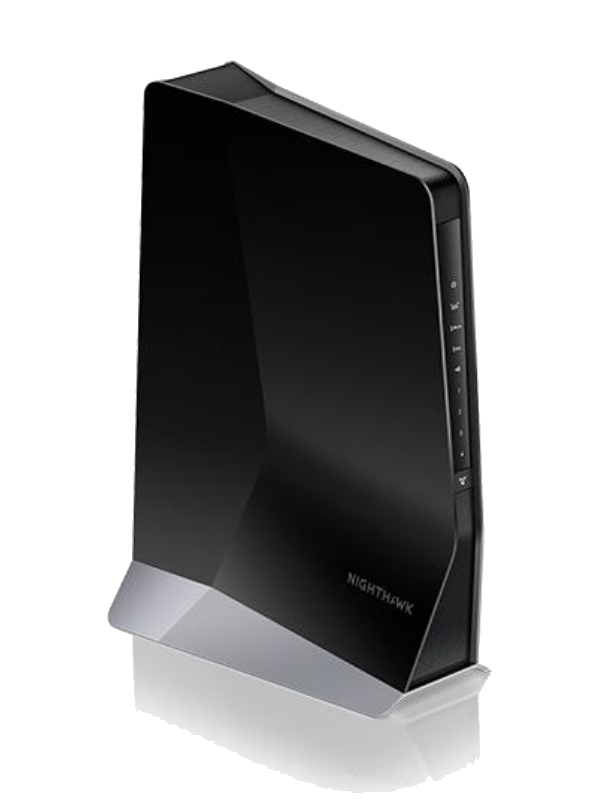 | Netgear EAX80
| VIEW LATEST PRICE → |
| Best Wi-Fi 6 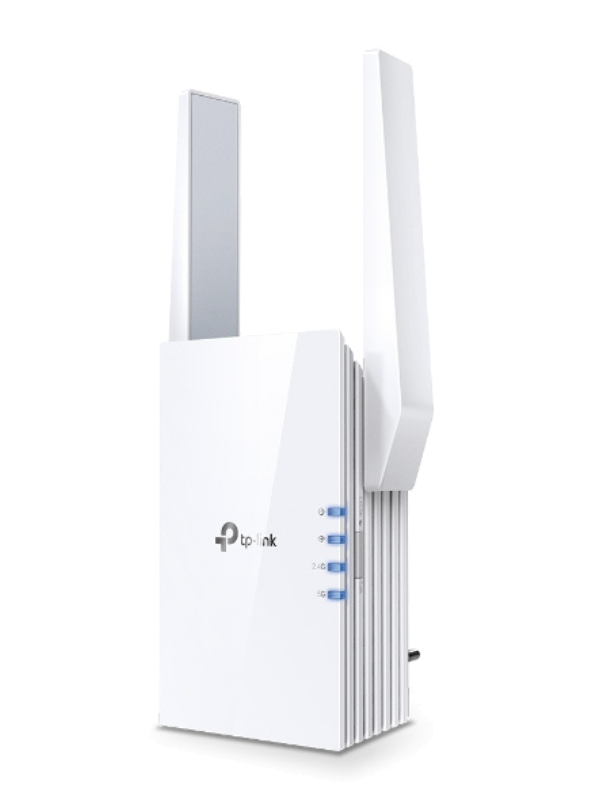 | TP-Link RE605X
| VIEW LATEST PRICE → |
| Runner Up 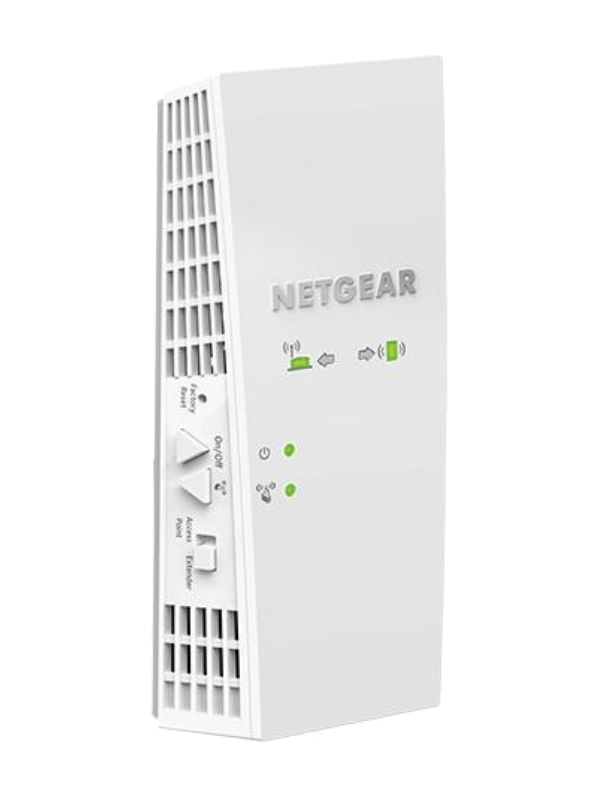 | Netgear EX7300
| VIEW LATEST PRICE → |
| Best Value 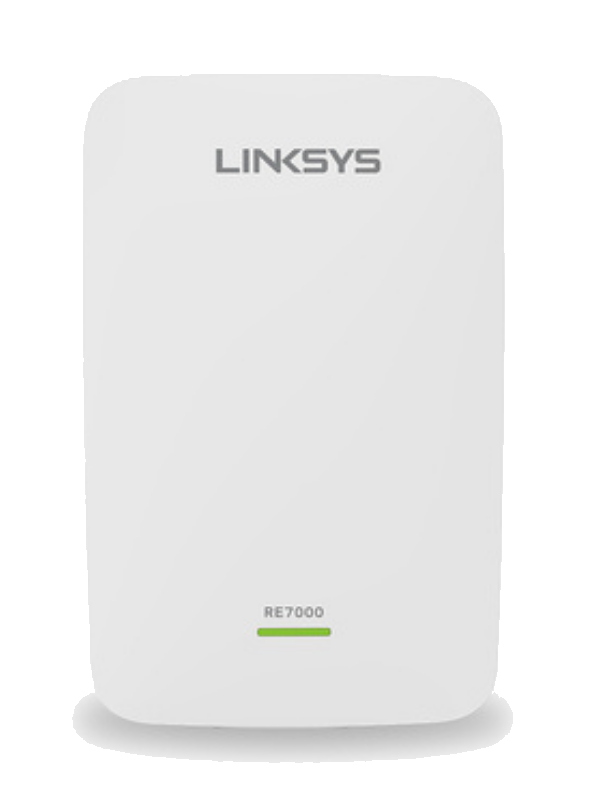 | Linksys RE7000
| VIEW LATEST PRICE → |
| Budget-Friendly 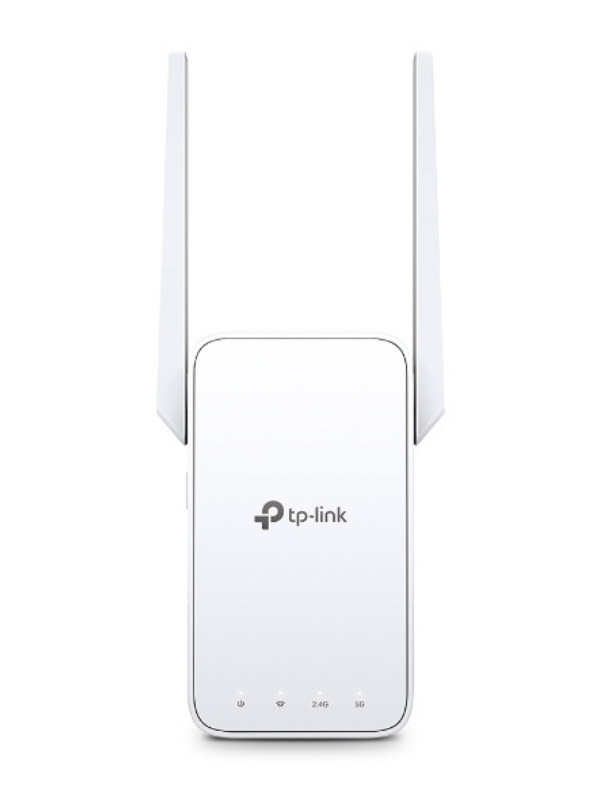 | TP-Link RE315
| VIEW LATEST PRICE → |
| Most Budget-Friendly 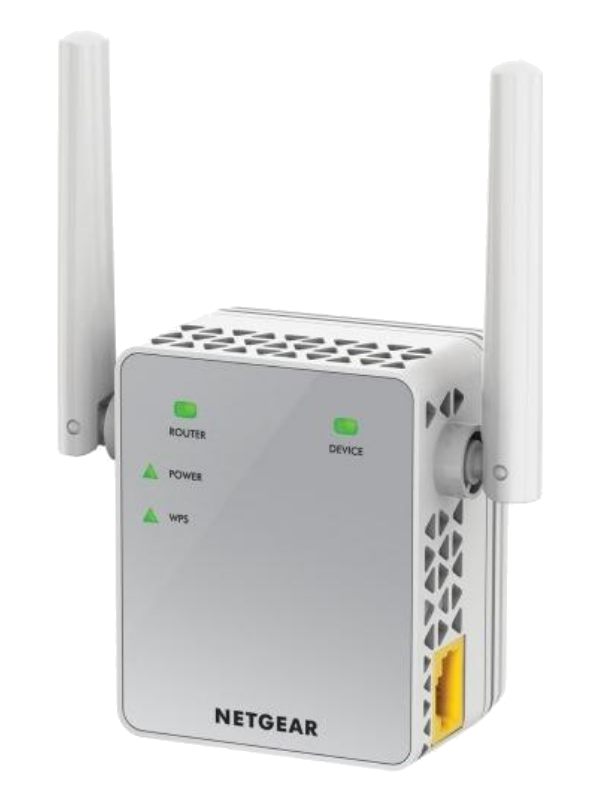 | Netgear EX3700
| VIEW LATEST PRICE → |
7 Best Wi-Fi Extenders For Comast Xfinity
Here are short overviews of the best Wi-Fi boosters for Xfinity.
#1 TP-Link RE650 – Best Overall

- Coverage: ≈ 70 feet
- Max speed (Wi-Fi): 332.58 Mbps
- Separate networks: Yes (not with TP-Link routers)
- Recommended for: Extreme Pro or below (900 Mbps)
- Wireless standard: Wi-Fi 5 AC2600
- Warranty: 3 years
Pros
- Fast
- Excellent range
- 3-year warranty
Cons
- Separate networks
If you have a larger Wi-Fi dead spot that needs coverage, the TP-Link RE650 is your best bet.
During testing, its Wi-Fi signal reached 332.58 Mbps from 5 feet, 276.39 Mbps from 25 feet, and 202.42 Mbps from 40 feet.
Surprisingly good results for a Wi-Fi 5 extender, which will be more than enough for a family of 5+ to stream 4k movies.
When connecting it with the router using Ethernet, in what TP-Link calls Access Point mode, the separate networks disappear and it gets even faster.
Reaching 657.23 Mbps from 5 feet instead of 332.58 Mbps. A speed that would theoretically be enough for 15 4k streams.
Now for where the RE650 really differentiated itself – the range.
Connected to the router using Wi-Fi, the extender network showed the strongest signal of all extenders we tested at basically any spot we measured.
And we estimate its range to be around 70 feet. This will be enough to provide coverage for an entire floor, even in the largest homes.
Connecting it to the router using Ethernet gave an even stronger signal, which we estimate reached 80 feet.
A signal so strong that it will beat many routers.
The setup was also very simple, and using the Teather app, we were up and running in less than 2 min.
One drawback with the RE650 is that it will give you a separate network if you don’t have a TP-Link router with OneMesh. This means that you have to change networks when you move around your home.
Overall, the TP-Link RE650 is best for you with large coverage needs. Just note that it creates a separate network from your router (not with OneMesh).
#2 Netgear EAX80 – Best Performer

- Coverage: ≈ 65 feet
- Max speed (Wi-Fi): 437.34 Mbps
- Separate networks: No
- Recommended for: Any Xfinity internet plan
- Wireless standard: Wi-Fi 6 AX6000
- Warranty: 1-year
Pros
- Very Fast
- Good range
- Same network
Cons
- Expensive
- Not as easy to set up
The Netgear EAX80 is the fastest extender we tested and it will work for any Xfinity plan.
In testing, it reached 437.34 Mbps from 5 feet and 365.68 Mbps from 15 feet using the 5 GHz band.
Walking away 10 feet more to 25 feet from the extender, the speed did, however, fall drastically to 227.59 Mbps.
The performance is still great for being a Wi-Fi extender.
And to put it in perspective, standing close by, you could download an HD movie (5 GB) in 1 MINUTE 38 SECONDS.
When connecting the EAX80 to the router with Ethernet, its speed achieved a new level – reaching 811.59 Mbps.
A throughput so fast you could download basically anything in mere minutes. (Yeah, that’s fast).
The signal of the EAX80 was also good, with it getting a very strong signal where we tested it. Our estimate is that it can reach about 65 feet, slightly more than the TP-Link RE605X.
This is enough to cover an entire floor and a bit more.
Another great aspect of the EAX80 is that it doesn’t add another network. Meaning it simply strengthens your router’s network.
Thus, you don’t have to switch networks when moving about in your home.
The EAX80 is, however, not only sunshine and roses. It does have some drawbacks.
The first one is its price, which is a lot for being a Wi-Fi extender. And at this price point, it might just be best to buy a new router or mesh system instead.
Furthermore, the setup of the EAX80 was not as simple as some of the other devices. And switching it between Ethernet mode and Wi-Fi mode needed a reset of the entire device to work.
Altogether, the Netgear Nighthawk EAX80 is a high-performer with great speed and range. But its performance comes at a high price.
#3 TP-Link RE605X – Best Wi-Fi 6

- Coverage: ≈ 60 feet
- Max speed (Wi-Fi): 346.35 Mbps
- Separate networks: Yes (not with TP-Link routers)
- Recommended for: Extreme Pro or below (900 Mbps)
- Wireless standard: Wi-Fi 6 AX1800
- Warranty: 3 years
Pros
- Fast
- Easy setup
- 3-year warranty
Cons
- Separate networks
The TP-Link RE605X is a solid Wi-Fi extender for you with the Xfinity Extreme Pro plan or below.
During testing, it got 346.35 Mbps from 5 feet, 268.04 from 15 feet, and 257.04 from 25 feet using the 5 GHz band.
These are solid results that are enough for 10 4K movie streams simultaneously.
Its speed nearly doubled when connecting it to the router using Ethernet, reaching 674.53 Mbps from 5 feet.
Which is enough to download most things in minutes.
Range-wise, the RE605X also performed excellently. Having a strong signal everywhere we measured it.
We estimate that it should be able to reach about 60 feet. This makes it able to provide coverage to an entire floor.
I will, however, mention that we tested the extender with a very strong router (ASUS RT-AX88U). And this has certainly improved its performance compared to if it is connected to a weaker router.
The setup was also insanely simple, just connect to its Wi-Fi, start the Tether app, and follow the instructions. We were up and running in less than 60 seconds.
Even though it wasn’t our first time setting up an extender (not. even. close.)
The biggest drawback with the RE605X is that if you don’t have a TP-Link router with OneMesh, it will have separate networks. Meaning you have to connect to it manually if you move around at home.
(It will not have separate networks if you use Ethernet to connect to the router).
So if you have the Xfinity gateway and don’t want different networks, consider one of the Netgear extenders instead.
Overall, the TP-Link RE605X is a solid all-around option. Having good performance, coverage, and setup, all for an affordable price.
Its drawback is that it creates separate networks if your router doesn’t support OneMesh.
#4 Netgear EX7300 – Runner Up

- Coverage: ≈ 60 feet
- Max speed (Wi-Fi): 324.58 Mbps
- Separate networks: No
- Recommended for: Extreme Pro or below (900 Mbps)
- Wireless standard: Wi-Fi 5 AC2200
- Warranty: 1-year
Pros
- Fast
- Combined networks
Cons
- Not as easy setup
The Netgear EX7300 is a solid all-around option for you with Xfinity’s Extreme Pro or below (900 Mbps).
It reached 324.58 Mbps from 5 feet and 239.65 from 15 feet, and 254.25 from 25 feet, all using the 5 GHz band.
And yes, it got a faster speed at 25 feet than 15 feet – to our huge surprise.
These speeds are solid and good enough for most families’ internet needs.
Connecting it to the router with Ethernet also improved its performance substantially, reaching more than double the throughput – 651.58 Mbps.
A speed so fast that it could download Call of Duty: Infinite Warfare (101 GB) in 22 minutes 11 seconds.
Just note we tested these extenders with a Gigabit internet plan and a very strong router (ASUS RT-AX88U). And this will improve their performance compared to if you use a weaker router.
Its range was good, but nothing out of the ordinary, reaching about 60 feet. This should be enough for a floor if you place the extender close to its middle.
Furthermore, the EX7300 also has a Mesh function, meaning it combines with your router’s network.
This means you don’t have to switch networks when moving about in the home.
The setup of the EX7300 was okay. We did have some problems connecting to the router, but it worked after a hard reset of the extender.
Altogether, the Netgear EX7300 is a solid all-around extender with decent performance and range. It also has combined networks and a reasonable setup.
#5 Linksys RE7000 – Best Value

- Coverage: ≈ 60 feet
- Max speed (Wi-Fi): 320.83
- Separate networks: Yes
- Recommended for: Extreme Pro or below (900 Mbps)
- Wireless standard: Wi-Fi 5 AC1900
- Warranty: 3 years
Pros
- Fast
- Easy to set up
- 3-year warranty
Cons
- Always separate networks
The Linksys RE7000 is another all-around option with a little of everything.
It got 320.83 Mbps from 5 feet and 267.2 from 25 feet during testing, both using the 5 GHz band.
Good results that are enough for about 5-10 4k streams.
When using Ethernet to connect to the router, the speed increased, but not as much as expected – getting 519.73 Mbps from 5 feet.
This is still fast and enough for a home with heavy internet usage and many smart devices.
Even though, I would not recommend getting the RE7000 if you plan to connect it to your router using Ethernet.
The reason for this is that the RE7000 will always have separate networks. Even if you use Ethernet. You will not get separate networks for most other extenders if you use Ethernet mode.
Range-wise, the extender was about average, reaching around 60 feet. This should be enough to provide Wi-Fi for an entire floor.
Setting up the RE7000 was also easy; just connected to its Wi-Fi, started the Linksys app, and followed the instruction.
It did, however, load for a longer time than most, so in the end, it took about 10 min.
All in all, the Linksys RE7000 is a solid value option. Providing you good performance for the price.
Just don’t get it if you want to connect your extender to the router using Ethernet. As some of the other options are better for that.
#6 TP-Link RE315 – Budget-Friendly

- Coverage: ≈ 60 feet
- Max speed (Wi-Fi): 187.61
- Separate networks: Yes (not with TP-Link routers)
- Recommended for: Performance Pro or below (300 Mbps)
- Wireless standard: Wi-Fi 5 AC1200
- Warranty: 3 years
Pros
- Cheap
- Easy to set up
- 3-year warranty
Cons
- Pretty slow
- Separate networks
The TP-Link RE315 is a solid cheaper extender for you with Performance Pro or below (300 Mbps).
In testing, it averaged 187.61 Mbps from 5 feet, 165.21 from 15 feet, and 122.62 Mbps from 25 feet.
These results are nothing spectacular but are nonetheless enough for around four 4k streams.
Connecting it to the router with Ethernet did as usually improve the speed, with it reaching 302.51 Mbps.
A solid result is enough for a family of around 5 people to use the internet without any issues.
The range of the RE315 did actually impress us, with it measuring about the same as the more expensive models.
We estimate that it should reach about 60 feet. This makes it enough for most dead spots you will have.
Like the other TP-Link extenders, it has separate networks if you don’t have a TP-Link router with OneMesh. But so does every other model in this price range as well. So, it’s not really a drawback.
Moreover, the setup was also very simple, we were up and running in a minute.
The TP-Link RE315 is a good budget-friendly internet plan for you without too fast an internet plan and router.
#7 Netgear EX3700 – Most Budget-Friendly

- Coverage: ≈ 50 feet
- Max speed (Wi-Fi): 138.72 Mbps
- Separate networks: Yes
- Recommended for: Performance Starter or below (100 Mbps)
- Wireless standard: Wi-Fi 5 AC750
- Warranty: 1-year
Pros
- Cheap
- Easy to set up
Cons
- Slow
- Separate networks
The Netgear EX7300 is the most basic extender on this list. Best for you with Xfinity’s Performance Starter plan or below (100 Mbps).
During testing, its Wi-Fi got 138.72 Mbps from 5 feet, 120.89 from 25 feet, and 55.93 from 40 feet.
The two first results are on the 5 GHz band, and the latter one is on the 2.4 GHz band. (learn the difference between the bands here).
These results are good considering its price tag but pretty slow in terms of raw speed. It will be enough for 3-4 users.
Using it as an access point (connected to the router using Ethernet), it got 216.32 Mbps. A more respectable number that will be enough for a couple of 4k streams.
Its range is where we start to see that we are in the cheaper range. It measures lower signal strength compared to the other more high-end models.
We approximate its range to be around 50 feet. This will be enough to cover a decently sized section of your home. But if you have a larger home and need coverage on an entire floor, it will most likely lack.
The EX7300 does also creates a separate network to the main router. This means that you have to change your network when you move around in your home.
Setting up the extender was, however, easy. With it connecting the router without any issues.
All in all, the Netgear EX7300 is for you with a smaller Wi-Fi dead-spot and slower internet plan.
Do you need a Wi-Fi Extender?
If your home is well served by your Wi-Fi router and you only need to strengthen the signal to a room or a section of your home, then a Wi-Fi extender might be the perfect solution.
That said, you should first consider moving your router to a central location in your home if possible.
If you are unhappy with the performance of the Xfinity gateway, consider getting your own devices instead.
Suppose you get something more premium, then you will most likely not need an extender.
For a modem, check out our article on the best modems for Xfinity.
And for a router, check out our article on the best routers for Xfinity.
Comcast Xfinity Wi-Fi Extender Buying Guide
This is what you should consider before buying a Wi-Fi extender/repeater for Comcast Xfinity. For a more general guide, check out our Wi-Fi extender buying guide.
Match the Brand
Most Wi-Fi extenders and repeaters will work with any router brand. That said, it is a good idea to match the brand of your router.
The reason for this is two-fold. The first is that the chance of problems will be lower if you match the brands.
Even though we tested all the extenders above with a router from another brand. Which they all worked with.
The second reason is that some brands, like TP-Link, will allow you to create a single network if you have a TP-Link router and a TP-Link extender.
This means that you don’t have to switch networks when you move around in your home.
If you use the Xfinity default gateway, it won’t be possible to match the brand. But if you have your own devices, this is something to consider.
Wi-Fi 5 vs. Wi-Fi 6
Nowadays, there are two main Wi-Fi standards in use – Wi-Fi 5 and Wi-Fi 6.
The difference is that Wi-Fi 6 is generally faster, can handle more devices, and is more secure. While Wi-Fi 5 is cheaper and often enough.
When getting a Wi-Fi extender for Xfinity, we recommend matching your router’s Wi-Fi standard.
This is because it’s unnecessary to get a Wi-Fi 6 extender if your router is Wi-Fi 5 and vice-versa. Even though, you can get a Wi-Fi 6 extender if you want to future-proof it.
If you have Xfinity’s gateway, you will most likely have Wi-Fi 6 with an internet plan above 200 Mbps.
And if you have less than 200 Mbps, you most likely have Wi-Fi 5.
To be 100% sure, check the bottom of your device. If it says 802.11ac, you have Wi-Fi 5, and if it says 802.11ax, you have Wi-Fi 6.
Check out our article on Wi-Fi 5 vs. Wi-Fi 6 for more info.
What if my Router is Wi-Fi 4?
If you have a Wi-Fi 4 router, it’s time to get a new router instead of buying an extender.
This is because there is a good chance that your Wi-Fi dead-spots disappear if you upgrade from a Wi-Fi 4 router.
For some good options, check out our articles on routers for Xfinity.
Dual-band vs. Tri-band
A dual-band extender has one 5 GHz and one 2.4 GHz band. The 5 GHz is faster, while the 2.4 GHz band has a better range.
In a tri-band extender, you will have two 5 GHz bands and one 2.4 GHz band.
This will not increase the device’s max speed, but the additional 5 GHz band will allow the extender to handle more bandwidth.
You might want to consider a third band if you have Xfinity’s Gigabit plan and many smart devices.
But for most, it won’t be necessary. Also, if you have a Gigabit plan and tons of smart devices, a Mesh System will likely serve you better.
No extender in the list above is tri-band, but if you want one, consider the Netgear X6S EX8000 AC3000.
For more info, check out our article on dual-band vs. tri-band.
Coverage
Generally, the extender/repeater will advertise its coverage on the buying page.
That said, from our testing, this is that accurate. With some being a bit excessive and others underestimating.
On average, the extenders we tested reached between 70-120% of what is advertised.
The coverage will also heavily depend on your router. Because a better router allows for a stronger signal to the extender. And thus also a stronger signal from the extender.
You should also be careful to place the extender close or far from the router. Both of which lead to worse speed and coverage.
Connected to the Router Using Ethernet or Wi-Fi
Most Wi-Fi boosters nowadays have two modes.
Either as a Wi-Fi repeater, connected to the router’s Wi-Fi, or a Wi-Fi extender (Access Point), connected to the router using an Ethernet cable.
I have used the term interchangeably during this article since everyone in the list works as both. But you should know the difference between the terms.
So, what mode is best?
Using Ethernet gave us around double the speed and about 20% better coverage. It also doesn’t create a second network for most devices, so there is no need to switch when moving around the home.
But it’s not always nice to have an Ethernet cable throughout the house. So, it really depends on what you want and your circumstances.
But if you have Xfinity’s Gigabit plan, the only way to get close to taking full advantage of the plan is to use Ethernet mode or get a Mesh system.
You could also use a powerline adapter. This device uses your home’s electric wiring to send Ethernet. Removing the long Ethernet cable through the house.
Mesh Wi-Fi vs. Wi-Fi Extender/Repeater
Both Mesh Wi-Fi and Wi-Fi boosters increase the coverage and performance of networks.
However, the main difference is that a Wi-Fi Repeater re-broadcasts an existing signal. While Mesh networks connect every device without a central router.
A Wi-Fi repeater/extender is better if you have an Xfinity Blast Pro plan or below (600 Mbps) and want to extend your coverage less than 60 feet.
On the other hand, a Mesh System is better if you have an Xfinity Extreme Pro plan or better (900 Mbps) and want to extend your Wi-Fi more than 60 feet.
This is, of course, not set in stone, but our opinion on the subject.
Check out our article on Mesh Wi-Fi vs. Wi-Fi Repeaters to learn more.
How to Set Up an Extender With Xfinity
To set up an extender, first download the brand’s app on your phone.
Then power it up and connect to its Wi-Fi using your mobile phone. Then open the brand’s app and follow the instruction.
Usually, you will be up and running in less than 2 minutes.
You can also use the WPS button on the extender. Press it both on your router and the extender, and the devices will connect with each other.
(The WPS button on most Xfinity gateways is just above the Ethernet ports)
Suppose you want to use an Ethernet connection between the devices. In that case, you might have to set it up using a computer for Netgear extenders.
On computers, you will get redirected to the setup page when you open any browser.
For more info, check out our article on how to set up a Wi-Fi repeater.
What about the Xfinity xFi Pod?
If you rent your gateway from Xfinity, you also might want to consider getting the Xfinity xFi Pod. This Wi-Fi extender is specially made for the xFi Gateway.
Just note that it’s an AC3000 extender, meaning it’s Wi-Fi 5 and thus likely slower than the Wi-Fi 6 alternatives in this article.
It does, however, offer free-roaming, or in other words, have a single network. So you don’t have to change network when moving around in your home.
Just remember, only get it if you rent an Xfinity xFi Gateway. If you have your own router, it will not work.
You can get an xFi Pod here.
Xfinity Internet Plans
Here are some of Xfinity’s internet plans and what Wi-Fi Booster I recommend for that plan.
| Internet Plan | Wi-Fi Booster |
| Performance (100 Mbps) | TP-Link RE315 AC1200 |
| Performance Pro (300 Mbps) | Linksys RE7000 AC1900 |
| Blast! (600 Mbps) | TP-Link RE605X AX1800 |
| Extreme Pro (900 Mbps) | TP-Link RE605X AX1800 |
| Gigabit (1200 Mbps) | Netgear EAX80 AX6000 |
FAQ
These are some frequently asked questions regarding Xfinity and Wi-Fi extenders.
Which is the best Wi-Fi Extender for Comcast Xfinity?
After much testing and consideration, we have concluded that the best Wi-Fi extender for Comcast Xfinity is the TP-Link RE650.
Because it’s fast, easy to set up, and affordable.
To see some other good options, check out the article above.
Does A Wi-Fi Extender Slow Down Internet Speed?
No, it does not.
Some speed is lost whenever the internet goes through a secondary device, like an extender.
But that just means that the extender can never be as fast as your router. You will still get a faster average internet connection in your home using an extender.
Where should I install the Wi-Fi extender?
You should install the extender between your router and the Wi-Fi dead spot. Usually, the extender will tell you if you are too close or far away from the router.
Our Verdict
After much testing and consideration, we have concluded that the best Wi-Fi extender for Comcast Xfinity is the TP-Link RE650.
Because it’s fast, easy to set up, and affordable. Just note that it creates a secondary network if it doesn’t connect to a TP-Link router with OneMesh.
